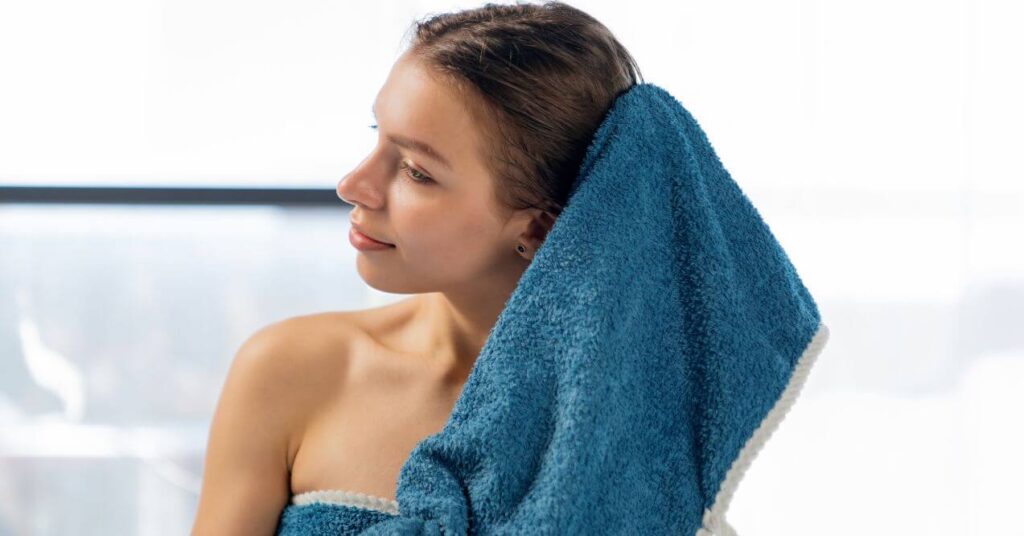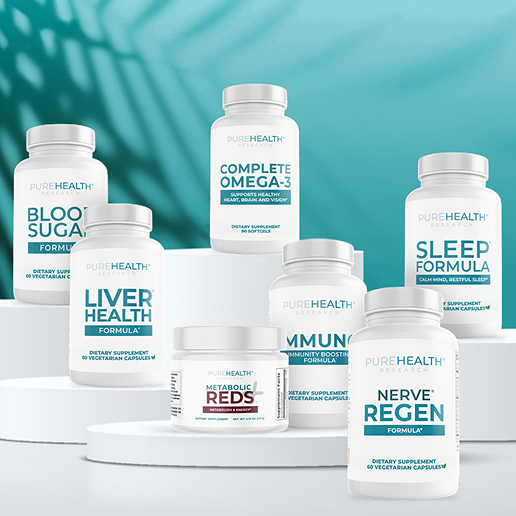Does Drying Your Hair With a Hair Dryer Damage It?
Does drying your hair with a hair dryer damage it? Learn the risks, benefits & tips for safely blow drying or air drying your hair!


In the world of hair care, the debate over the best methods for drying hair has long been a topic of discussion. So, does drying your hair with a hair dryer damage it? It’s a valid concern, as the health and appearance of our hair can have a significant impact on our overall confidence and well-being.
In this article, we’ll dive into the various aspects of hair drying, exploring the potential risks and benefits of using a hair dryer, as well as alternative methods like air drying. By the end, you’ll have a clearer understanding of how to care for your hair and maintain its health and vitality.
Does Blow-Drying Your Hair Cause Damage?
So, is blow drying hair bad? The perception that blow drying hair is inherently damaging is a common one, but it’s not entirely accurate. While excessive heat exposure can indeed lead to hair damage, such as split ends and breakage, using a hair dryer in moderation and with the right techniques can minimize these risks.
A study found that while high-temperature blow drying can cause surface damage to the hair cuticle, using a lower heat setting and keeping the dryer at a distance can significantly reduce the potential for harm.
It’s also important to consider the overall health of your hair when assessing the impact of blow drying. If you’re experiencing hair loss or thinning, you may be wondering, How to Stop Hair Loss and Regrow Hair Naturally. While blow drying alone is unlikely to be the sole cause of hair loss, it can contribute to damage that makes hair more prone to breakage and shedding.
Additionally, if you’ve recently experienced hair loss, you might be asking, How Long Does It Take for Hair to Grow Back? The answer varies depending on factors like genetics and overall hair health, but minimizing heat damage can support the natural hair growth process.
Is It Good to Let Your Hair Dry Naturally?
Allowing your hair to dry naturally, without the use of a hair dryer or other heat styling tools, can offer several benefits for hair health. Is it better to air dry or blow dry hair? Air drying enables your hair to retain its natural texture and can help prevent the damage that can occur from excessive heat exposure.
When hair is allowed to dry naturally, it may be less prone to frizz, as the cuticle remains smooth and intact. Natural drying also helps preserve the hair’s moisture balance, as heat may strip away natural oils that keep hair soft and healthy.
4 Tips on How to Dry Hair Without Damaging it
While air drying is generally considered the gentlest method for drying hair, there are times when using a hair dryer is necessary or preferred. To minimize damage and maintain healthy hair when blow drying, consider these four tips how to dry hair without damaging it:
1. Don’t Blow-Dry Sopping Wet Hair
When you step out of the shower, resist the urge to immediately blast your hair with the blow dryer. Starting with excessively wet hair can prolong the drying process, exposing your hair to more heat than necessary.
Instead, gently towel-dry or air-dry your hair until it’s about 70-80% dry before reaching for the blow dryer. This will not only reduce the overall drying time but also minimize the potential for heat damage.

2. Tack on a Diffuser
If you have curly, wavy, or textured hair, using a diffuser attachment on your hair dryer can be a game-changer. A diffuser helps distribute the heat more evenly, reducing the concentrated airflow that can disrupt curl patterns and cause frizz.
By gently cupping your hair with the diffuser and using a lower heat setting, you can enhance your natural texture while minimizing the risk of damage.

3. Use Conditioner
Incorporating a quality conditioner into your hair care routine is crucial for maintaining healthy, resilient hair. Conditioner helps replenish moisture lost during the washing process and forms a protective barrier around the hair shaft.
This barrier not only makes hair smoother and more manageable but also helps shield it from the potential damage caused by heat styling. Be sure to choose a conditioner suited to your hair type and use it consistently for the best results.

4. Use a Quality Heat Protectant
What is the healthiest way to dry your hair after all and is a hair dryer bad for your hair in the end? Before reaching for your hair dryer, applying a heat protectant product is highly recommended. These specially formulated sprays, creams, or serums create a barrier between your hair and the high temperatures of styling tools.
Heat protectants work by sealing the hair cuticle, locking in moisture, and preventing the thermal damage that can lead to dryness, breakage, and split ends. Look for products that contain ingredients like silicones, which provide slip and reduce friction, or natural oils that nourish and protect the hair.

What Are the Most Important Factors Influencing Hair Growth? While proper drying techniques are essential for maintaining healthy hair, it’s important to remember that hair growth is influenced by a variety of factors. Genetics, age, hormones, and overall health all play a role in the rate and quality of hair growth.
A balanced diet rich in proteins, vitamins, and minerals is crucial for supporting healthy hair from the inside out. Managing stress, getting enough sleep, and staying hydrated can also contribute to better hair growth and overall hair health.
How to Nourish Damaged Hair?
If your hair is damaged due to heat styling, chemical treatments, or environmental factors, it’s essential to take steps to nourish and repair it. Here are some tips to help revitalize your damaged hair:
- Use a gentle, sulfate-free shampoo to avoid stripping your hair of its natural oils.
- Apply a deep conditioning treatment once a week to replenish lost moisture and strengthen your hair.
- Limit the use of heat styling tools and always use a heat protectant when you do.
- Protect your hair from the sun by wearing a hat or using a UV protectant spray.
- Trim your hair regularly to remove split ends and prevent further damage.
- Eat a balanced diet rich in vitamins and minerals that support healthy hair growth, such as biotin, vitamin C, and iron.
- Consider using a hair growth supplement like Regrow Hair Activation Formula to support healthy hair growth from within.
Dr. Holly Lucille, ND, RN, a renowned naturopathic doctor, endorses PureHealth Research‘s Regrow Hair Activation Formula for its potent blend of 22 natural vitamins, minerals, hormone inhibitors, and hair boosters.
The key ingredients in Regrow Hair Activation Formula, such as Hydrolyzed Collagen I & III, Keratin, Saw Palmetto, Hyaluronic Acid, Vitamins A, C, D3, Biotin, Zinc, and Selenium work together to nourish your hair follicles, promote healthy hair growth, and combat the effects of aging and environmental damage.
By providing your body with the critical building blocks it needs to grow strong, healthy hair, supplements for skin and beauty may help improve hair volume, thickness, and shine, while also supporting you against hair loss.
Rubbing hair vigorously with a towel can cause friction, leading to breakage and frizz. Instead, gently squeeze excess water from hair with a microfiber towel or soft t-shirt. This minimizes damage and helps maintain the hair’s natural texture without causing excessive dryness or roughness.
The healthiest way to dry hair varies based on individual hair type and texture. Generally, air drying or using a blow dryer on a cool setting with a diffuser is the least damaging. Applying a heat protectant and avoiding high temperatures helps minimize damage for all drying methods.
Daily blow drying can lead to heat damage, dryness, and breakage over time, especially if using high heat settings. It’s best to limit blow drying to 2-3 times per week and use a heat protectant. Alternating with air drying or other gentler drying methods can help maintain hair health.
Sign up for our Healthy Living newsletter!
Advertisement. This site offers health, wellness, fitness and nutritional information and is designed for educational purposes only. You should not rely on this information as a substitute for, nor does it replace, professional medical advice, diagnosis, or treatment. If you have any concerns or questions about your health, you should always consult with a physician or other health-care professional. Do not disregard, avoid or delay obtaining medical or health related advice from your health-care professional because of something you may have read on this site. The use of any information provided on this site is solely at your own risk.











